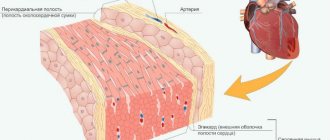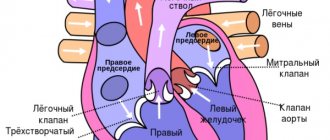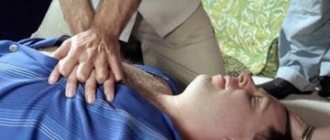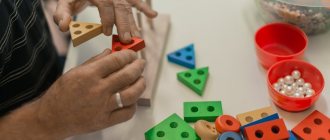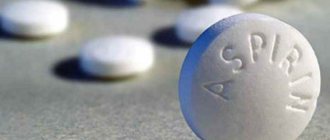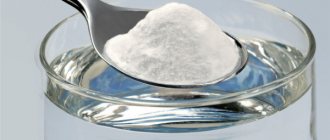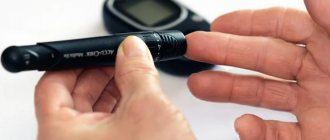And today there are even athletes among heart patients. However, for such people it is not sport that is more beneficial, but physical education. Moreover, it is simply necessary for many of them.
Proper exercise is beneficial for people with hypertension, coronary artery disease, heart failure and other heart diseases. They improve the quality of life, slow down the progress of the disease, and prevent the development of heart attacks, strokes, heart failure and other serious complications. If there is no exacerbation or decompensation of the disease, then moderate exercise is not only contraindicated, but also necessary. But it should be understood that the level of load depends on the state of the cardiovascular system, blood pressure, pulse rate, and pain syndrome. And only a doctor can determine it for sure. Therefore, if you are planning to engage in physical education, it is better to consult with him.
Article on the topic Winter and the heart. What can help you protect yourself from a heart attack?
How much and what is the best way to exercise? Here are some tips for hypertensive patients from the influential professional medical organization British Heart Foundation:
Try to exercise every day.
Your goal is at least 2.5 hours of study per week.
One session should last at least 10 minutes, and physical activity should be of moderate intensity. That is, your breathing rate and heart rate should be faster than usual, and you should feel warmed up. This happens when walking fast, cycling, or swimming.
Lifting weights and working with weights are undesirable, as they raise blood pressure higher.
How to strengthen the cardiovascular system with food?
The table for diseases of the cardiovascular system, and especially heart attack, heart failure, should be as correct and useful as possible.
This is achieved by consuming proteins, fats, carbohydrates, vitamins and microelements necessary for the myocardium and blood vessels. Below are foods that improve heart function, lower cholesterol, cleanse blood vessels and prevent cardiovascular diseases. This is the current advice from cardiologists regarding the prevention of cardiac problems.
Based on the WHO (World Health Organization) recommendation, half of the daily protein intake should come from plant proteins. Their content is high in legumes (peas, beans), grain products, soy milk, and cocoa. In between meals, snacking on seeds (sesame) and various types of nuts (hazelnuts) is useful. Meat dishes (it is advisable to use low-fat varieties: chicken, rabbit, veal) are eaten boiled or baked. Dairy products (cheese, cottage cheese, unsweetened yogurt) and eggs are accepted only low-fat.
For fats to benefit the heart, the diet should contain 2.5 times more unsaturated fats than saturated fats. Mackerel, herring, trout, sardines and various vegetable oils (olive, sunflower, cottonseed, soybean) are sources of polyunsaturated fatty acids. They lower cholesterol, triglycerides, thin the blood and reduce blood pressure.
Limit the consumption of quickly digestible carbohydrates (baked goods, sugar, honey), giving preference to various cereals and cereal products. And by eating fresh vegetables and dried fruits (banana, apple, kiwi, peach, dried apricots), plant fruits (berries), you will restore the balance of vitamins, minerals and trace elements that are essential for the functioning of the heart.
Gymnastics for hypertension
{banner_banstat9}
Vascular training is especially important for hypertension. High blood pressure is often due to the fact that the walls of blood vessels lose their ability to relax and blood has difficulty “pushing” through the narrowed vessels. Atherosclerotic changes in the arteries – cholesterol plaques on their walls – add to problems with high blood pressure. If you do not make any efforts to train slow-moving vessels, a chronic increase in pressure can lead to serious consequences.
Important!
If you have hypertension, you should not perform bending, sudden swings of arms and legs, or all exercises that ensure blood flow to the head. You should not hold your breath while exerting muscle force - this can lead to an even greater increase in pressure.
Exercises for hypertensive patients
- Warm-up: walking around the room, with smooth turns of the body. The arms and legs perform non-sudden movements - short swings, bending, half-squats. When walking, you can perform circular movements with your pelvis. Duration – 5 minutes.
- Sitting on a chair, place your feet at a distance of 30-40 cm, raise your arms up. Lowering your arms down and moving them behind your back, bend forward towards your knees. At the same time, you need to keep your head straight, your gaze directed forward.
- Without rising from the chair, extend your arms straight to the sides, and at the same time raise your leg bent at the knee to your chest. At the same time, your arms are brought together in front of you, helping to hold the raised leg. Perform alternately with the right and left foot, 6-8 times.
- Hands to the sides - inhale, as you exhale, place your hands on your waist and tilt your body to the right. Repeat with a tilt to the left. You can perform the exercise both sitting and standing.
- Extend your arms to the sides, keep your body straight. Move your right leg clearly to the right, hold it at a height of 30-40 cm. Repeat the same movements with your left leg.
Video: exercises to normalize blood pressure
{banner_banstat10}
Breathing exercises
Breathing exercises greatly help to enrich the blood with oxygen, which is a natural vasodilator. There are several practices of healing breathing exercises - Chinese Qigong gymnastics, Strelnikova breathing exercises, Buteyko deep breathing method, yoga. With all the variety of technologies, the principles of breathing are used with a great degree of similarity: a deep short breath through the nose, holding the breath and an almost imperceptible natural exit through the mouth.
During yogic breathing, inhalation is accompanied by protrusion of the abdomen, followed by exhalation after a pause - the abdomen is drawn in as much as possible. Several breathing exercises can reduce blood pressure and normalize vascular function. And mastering breathing practices will help you forget about hypertension for many years.
Video: breathing exercises for hypertensive patients
Exercises to strengthen the heart and blood vessels
Physiotherapy is a set of methods, the effect of which is realized under the influence of an electric or magnetic field, laser radiation, ultrasound and with the help of physical therapy.
The work of a physiotherapist is aimed at:
- elimination of stress, neurotic state;
- lowering blood pressure (reduces the load on the heart);
- improvement of the rheological properties of blood (prevention of thrombosis);
- normalization of body weight;
- activation of metabolism (prevention of the development of atherosclerosis in the coronary vessels).
Most of these effects are achieved through physical exercise. At the present stage of development of medicine, gymnastics to strengthen the heart is used for any pathology. There are no absolute contraindications, except for the acute period. Recommended for both pregnant women and people in the recovery stage. In order not to cause harm, they combine not only benefits and ease of execution, but also safety. Physical activity is not recommended after a sore throat, as such behavior provokes complications.
Dynamic aerobic exercise is recognized as the best exercise for the myocardium. Walking, running, swimming, cycling, skiing, skating, and dancing train the heart muscle. Patients with angina pectoris are advised to swim carefully, especially in cool water, as this causes spasm of the heart vessels. At the same time, they remember that they start with moderate loads, gradually developing endurance. Performing exercises should never be accompanied by discomfort or pain. If shortness of breath, arrhythmia, or bradycardia occurs, stop exercising and make an appointment with a cardiologist. Before and after training, monitor your heart rate. This indicator is normally no more than 120-130 beats per minute (tachycardia occurs) and returns to the original value after 5-7 minutes. In people with heart problems, the pulse should not increase by more than 20%.
But you can strengthen the heart muscle at home and without special equipment. Here are some tips that you can follow to improve your training efficiency:
- The exercises involve large muscle groups.
- Be sure to include a warm-up at the beginning and a cool-down at the end of each complex for 10 minutes.
- The main part lasts 10-15 minutes. Exercises for arms → torso → legs → feet.
- The delivery of oxygen to the heart will be ensured by proper breathing, retraction of the abdomen, and straight, straight shoulders.
- The key to success is systematic and regular exercise with heart rate monitoring and a gradual increase in the duration and intensity of the load.
Healthy neck vessels are the key to good health
The neck is an extremely important part of the human body. It is here that the vital arteries are concentrated, through which the blood supply to the brain and spinal column occurs. Weakened neck muscles force a person to constantly strain to keep their head and back straight. This tension leads to compression of blood vessels and pinching of nerve endings. Hence - impaired blood circulation, headaches, high blood pressure and other unpleasant symptoms.
By strengthening the neck muscles, you can restore the blood vessels in the neck and thereby get rid of ailments. Among the exercises, the main place is occupied by turns, tilts and rotations of the head. All movements should be performed extremely smoothly, not forgetting to monitor proper breathing. Chinese gymnastics, where there are no sudden and active movements, gives good results. Exercises for neck vessels and muscle strengthening can be performed both at home and at work - you do not need a specially equipped place for this.
Exercises to strengthen neck muscles
- Stand against a wall, trying to keep all parts of your body pressed tightly against the vertical surface. As you inhale, push yourself into the wall with all your might, tensing your neck muscles as much as possible. Hold your breath and maintain this position for 5-6 seconds.
- Sitting on a chair, you need to place your palm on your forehead and press hard, forcing your head to lean back. At the same time, straining your neck, you should resist the forward movement of your head. Such a “confrontation” with maximum tension should be held for 5-7 seconds, while breathing should be suspended. After the time has passed, exhale and rest for 10-12 seconds. Repeat movements 3 to 7 times.
- Similar movements are made with the head tilted forward and to the sides. This gymnastics is good because you can perform 1-2 exercises every hour during the day - this is extremely useful for dilating the blood vessels of the neck and brain.
- Slowly rotate your head in a semicircle, from one shoulder to the other, holding it in extreme positions. Repeat 8-12 times, gradually increasing the amplitude.
Video: exercises useful for VSD
The correct regimen for a heart patient: the doctor’s top tips
In a person who is accustomed to a certain daily routine, the body functions more smoothly and is less susceptible to diseases.
To strengthen your heart, we advise you to follow the rules as recommended by doctors:
- Sleep at least eight hours a day. During a night's rest, the heart slows down, so the myocardium experiences less stress.
- Physical activity. Daily morning exercises and a complex of therapeutic aerobic gymnastics - at least three to four times a week. The myocardium is a muscle, and the more it is trained, the stronger and more resilient it is.
- Eating the right menu equals health and longevity. Fractionally, five times a day, little by little. A full stomach puts pressure on the autonomic nerves, which are responsible for the functioning of the heart.
- Rejection of bad habits.
- A charge of positive emotions every day. It has been proven that endorphins (hormones of happiness) normalize blood pressure, stimulate the immune system and reduce the negative effects of stress on the body.
Small capillary training
A network of capillaries is located throughout the body. These are the smallest vessels that deliver arterial blood directly to the skin or internal organs, and then produce an outflow of waste products through the venous bed. If capillary blood circulation deteriorates in any area, toxins and other harmful substances accumulate, this leads to disruptions in the functioning of internal organs and systems.
The founder of the training system for the capillary network is Katsuzo Nishi. He developed a simple technique that will keep the capillary walls toned and stimulate the removal of toxins from the body.
- The “Vibration” exercise is performed while lying on your back. It is recommended to perform it in the morning without getting out of bed. You just need to raise your arms and legs up and shake them vigorously for several minutes. In addition to improving the condition of the capillaries, there is an intensive outflow of lymph. This will remove toxins and get rid of morning puffiness.
- The next exercise is called “Goldfish”. It is also performed lying on your back. Your hands should be placed behind your head, at neck level, and your toes should be pulled towards your shins. Next, you need to tense your muscles and vibrate your whole body, like a swimming fish. Such movements relax the cervical nerves and improve blood circulation in small vessels.
IMPORTANT! Training for capillaries takes no more than 5 minutes. It is worth performing the complex twice a day: in the morning, immediately after waking up, and before going to bed.
It is recommended to start every morning with exercises Niches for capillaries
Preventive agents
The assessment of care for cardiovascular diseases is measured by the risk of death, so complex therapy is aimed at preventing acute conditions: myocardial infarction, pulmonary embolism, stroke.
Groups of drugs that prevent cardiovascular accidents:
- statins;
- fibrates;
- antianginal agents;
- antihypertensive drugs.
Herbal medicines and metabolic agents are used as auxiliary therapy, which has a mild restorative effect with a minimum number of adverse reactions.
Regular use of medications reduces the risk of mortality from cardiovascular “events.” Histology determines the stabilization of pathological processes, the limitation of foci of fatty infiltration and necrosis.

